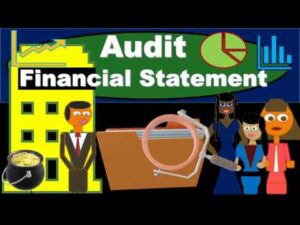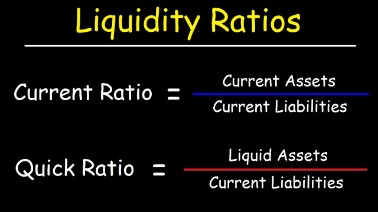Content
- Schedule E Rental and Royalty input – Screen 18:
- Section 199A: Qualified Business Income Deduction (QBID)
- Assets missing from QBI calculation
- What is a qualified business income deduction?
- Specified Service Trade or Business (SSTB)
- The qualified business income deduction can save business owners money on their taxes. Learn if and how you qualify here.
The unadjusted basis of qualified property (UBIA) is the basis of tangible property, such as equipment and machinery, without regard to depreciation or other write-offs. But only take into account such property that has not reached the end of the depreciable period or 10 years after it’s been placed in service, whichever is later. Qualified business income (QBI) is essentially your share of profits from the business. But more specifically, it is the net amount of income, gain, deduction, and loss from your business. The UBIA used to calculate the partner’s QBI deduction must be calculated by the individual or entity that directly conducts the qualified business. They’re called specified service trades or businesses or SSTBs.
Financial professionals should likely not try to classify themselves as something other than a financial advisor, retirement planner, or actuary to avoid being considered an SSTB. They are specifically excluded from benefiting from this deduction, but the IRS already knows that some businesses might try and skirt the law to get the benefit. In the case of any taxpayer whose taxable income for the taxable year does not exceed the threshold amount, paragraph (2) shall be applied without regard to subparagraph (B). After combining all of the allowed QBI deductions, we will subject the combined QBID total to the to the overall limitation. In the calculation of the W-2 wage limit for Jelly Supply, the sum of 25% of W-2 wages and 2.5% of the unadjusted basis of assets exceeded 50% of the W-2 wages of Jelly supply.
Schedule E Rental and Royalty input – Screen 18:
If you feel QBI was misrepresented on your K-1, you can check the box Reduce QBI by self-employed health insurance deduction to reduce QBI as needed. If you don’t meet those requirements to file Form 8995-A, your deduction is figured on Form 8995 instead. Form 8995-A and its supporting schedules, like Schedule B Aggregation of Business Operations, won’t be completed since they aren’t required to file the return. See the IRS Instructions for Form 8995-A for more information. Qualified property includes all tangible, depreciable property that hasn’t reached the end of its depreciable life. For real estate, the depreciable life may be up to 39 years.

Here’s an overview of the information that goes on Form 8995. If your taxable income is less than these amounts, you don’t have to calculate the limitation. Now that you’ve calculated How To Get A Qualified Business Income Deduction your QBI for each of your businesses, let’s move on to calculating your limitation. Unfortunately, you may not always get to claim a straightforward 20% deduction.
Section 199A: Qualified Business Income Deduction (QBID)
Other less common types of income may not be included in income for the QBI calculation. Such term shall not include gross receipts of the taxpayer which are derived from the lease, rental, license, sale, exchange, or other https://kelleysbookkeeping.com/ disposition of land. Therefore, if a taxpayer has net capital gains, those gains may decrease his or her QBID. For this deduction, net capital gains are long-term gains and qualified dividends minus short-term losses.
You must have ownership interest in a qualified trade or business to claim the QBI deduction. A qualified business is a partnership, S corporation, or sole proprietorship. The deduction is limited to the lesser of the QBI component plus the REIT/PTP component or 20 percent of the taxpayer’s taxable income minus net capital gain.
Assets missing from QBI calculation
The QBI deduction only reduces the amount of federal income taxes owed by qualified business owners. It does not reduce Social Security or Medicare tax obligations (self-employment tax) or net investment income tax. The QBI deduction’s income limits are adjusted annually for inflation.
A Qualified Business Income – Rentals worksheet is available in Forms view in the E folder to review the calculation for QBI as well as any future suspended losses between those occurring prior to TCJA and those occurring in the current year. Similarly, the deduction is not available on income earned working as an employee for someone else. You can email the site owner to let them know you were blocked. Please include what you were doing when this page came up and the Cloudflare Ray ID found at the bottom of this page. Barbara Weltman is a small business tax expert who contributes to The Ascent and The Motley Fool. For example, you buy office furniture, which has a 7-year recovery period for depreciation.
Tax & accounting community
Let’s go over when these limitations apply to the amount you can deduct. On the other hand, maybe you have a more complicated situation — like earning high self-employment income or working in certain industries like law or medicine. In that case, there will be limits placed on the amount of QBI you can claim. Get access to a dedicated business tax expert, with unlimited year-round advice, at no extra cost. Full Service Business is perfect for Partnerships, S-Corps, and Multi-Member LLCs. For QBI reported on a K-1, Lacerte assumes the entity issuing the K-1 has already reduced the QBI appropriately.
- C corporations are ineligible to take the QBI deduction because they are not pass-through entities.
- Please include what you were doing when this page came up and the Cloudflare Ray ID found at the bottom of this page.
- This overall limitation ensures that the 20 percent deduction isn’t taken against income that is already taxed at the lower capital gains tax rate.
- The QBI deduction is only available to owners of pass-through businesses, even if you’ve opted to take the standard deduction as opposed to an itemized deduction.
- As all entities with a QBI deduction have been aggregated, the total combined QBID is $41,000.
- A Qualified Business Income – Farm income worksheet is available in Forms view in the F folder to review the calculation for QBI as well as any future suspended losses between those occurring prior to TCJA and those occurring in the current year.
The term “qualified business income” means, for any taxable year, the net amount of qualified items of income, gain, deduction, and loss with respect to any qualified trade or business of the taxpayer. Such term shall not include any qualified REIT dividends or qualified publicly traded partnership income. Business owners who are limited by the 20%-of-taxable-income calculation might wish to increase taxable income through Roth conversions or changing retirement plan deferrals from pre-tax to Roth. Since the qualified business income deduction is limited to the lesser of 20% of QBI or 20% of taxable income, in addition to the asset and wage tests, taxpayers might not have enough taxable income to get the full benefit of the QBI deduction.
For both SSTBs and non-SSTBs
The QBI deduction will flow to line 10 of Form 1040 or 1040-SR, or line 38 of Form 1040-NR. Calculating your limitation will help you decide if aggregating your businesses hurts or helps your total deduction amount. Corporations (C corps) are not eligible for the QBI deduction because the corporation’s income is taxed separately from that of the owner. Other workarounds that businesses are trying to use will not work in almost all cases as they are already being looked at by the IRS. These workarounds are referred to as “crack and pack,” or splitting up one business into two or more different businesses with the same owner to separate out SSTB income and non-SSTB income and avoid missing out on part or all of the QBI deduction. The regulations clarify who is eligible for the new 20% deduction and who is not.

The following information is provided to help you decide whether it might make sense to restructure your business. 115–141, § 101(a)(2)(C), substituted “Except as otherwise provided in subsection (g)(2)(B), taxable income” for “Taxable income”. Except as provided in regulations, the deduction under paragraph (1) shall be allocated among the members of the expanded affiliated group in proportion to each member’s respective amount (if any) of qualified production activities income.